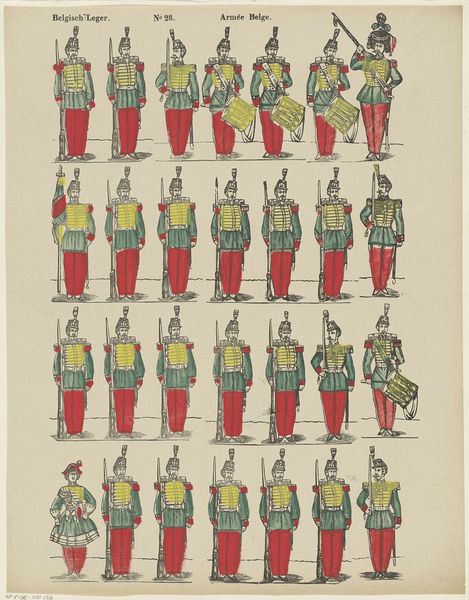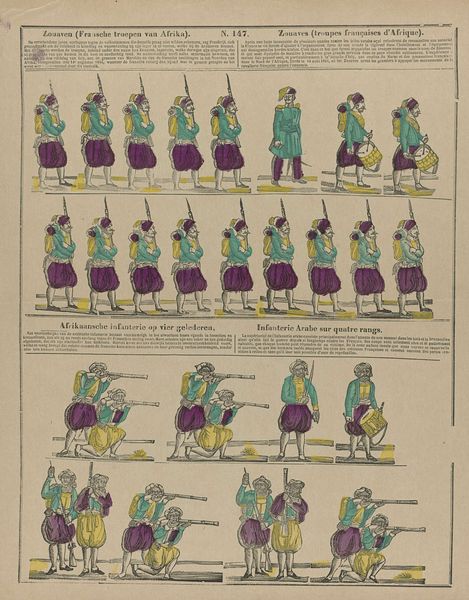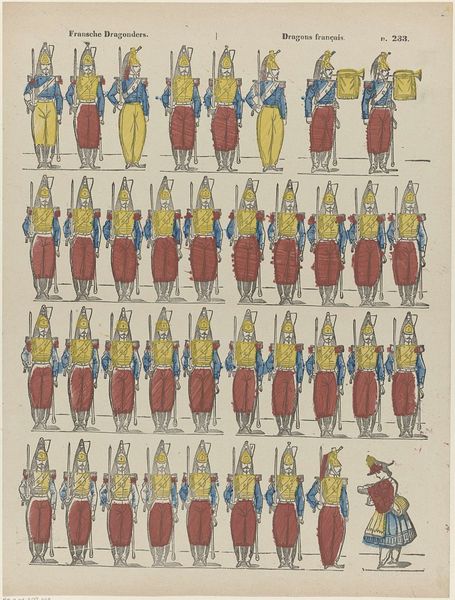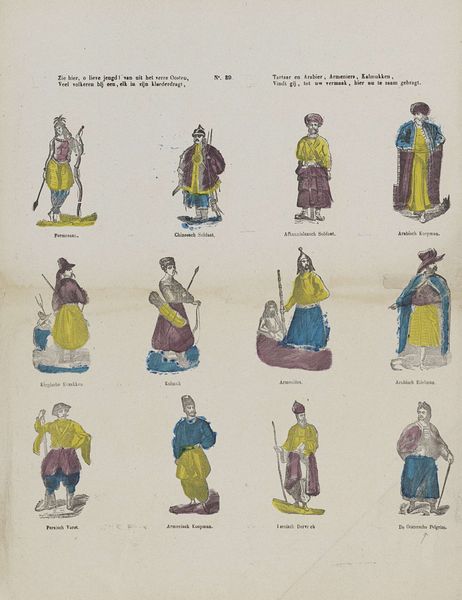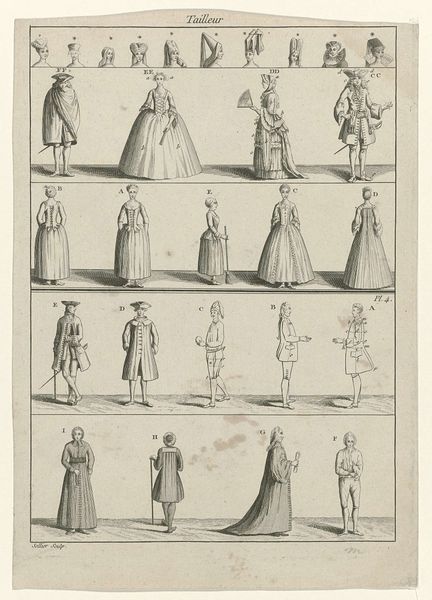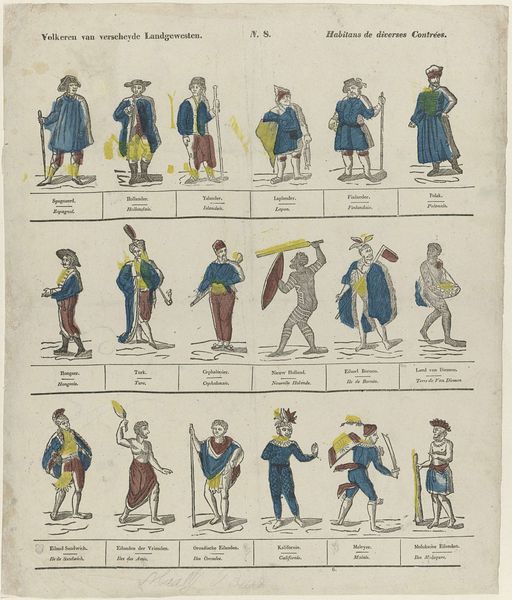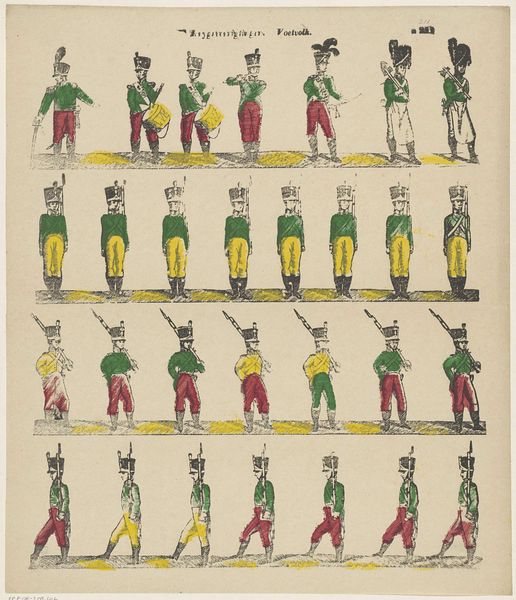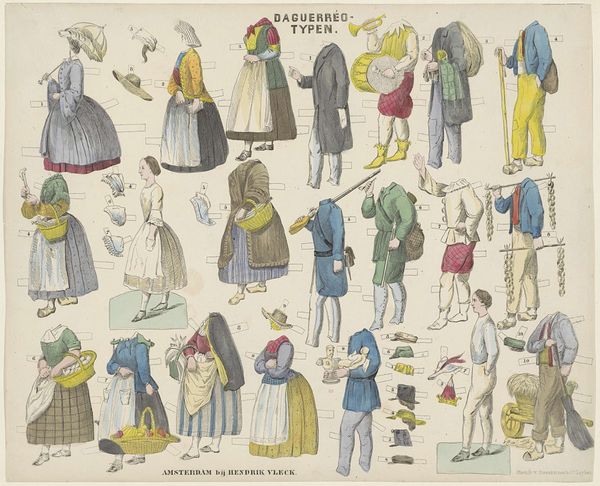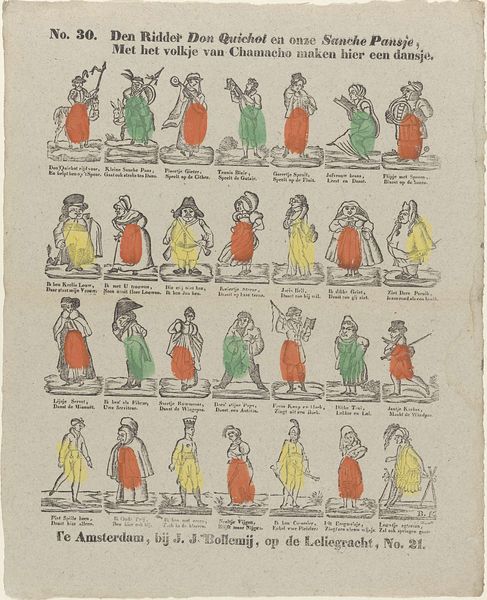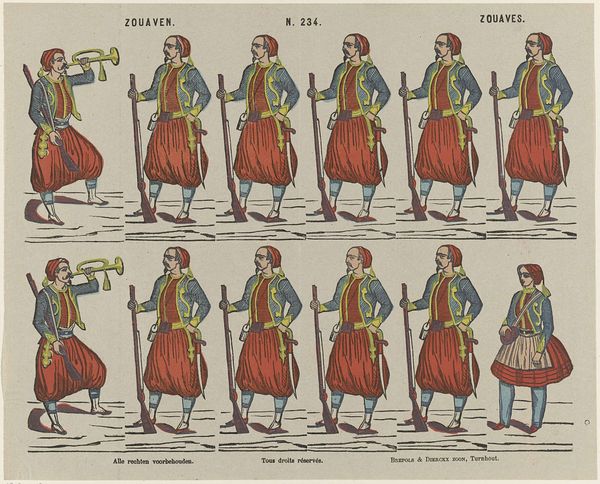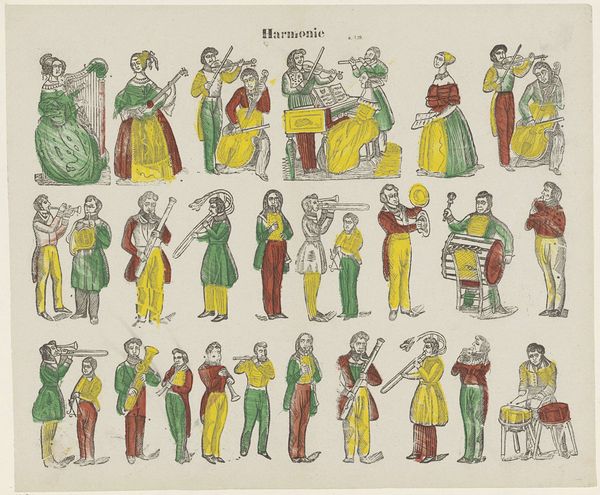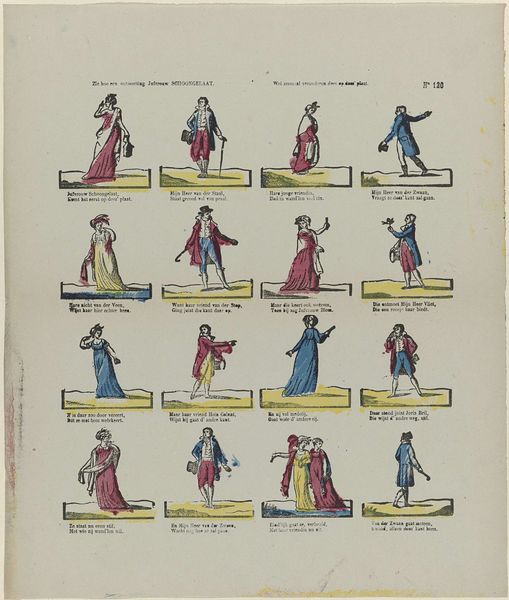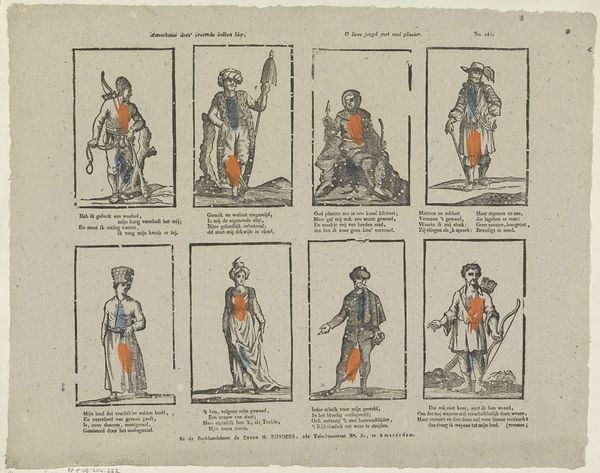![Garde impériale Turque / Keizerlijke garde der Turkijë [(...)] by Philippus Jacobus Brepols](/_next/image?url=https%3A%2F%2Fd2w8kbdekdi1gv.cloudfront.net%2FeyJidWNrZXQiOiAiYXJ0ZXJhLWltYWdlcy1idWNrZXQiLCAia2V5IjogImFydHdvcmtzL2U2MDQxZjZhLWZjMzgtNGQxYi1iY2IxLWNiMWQ4ZjdkZjgwNy9lNjA0MWY2YS1mYzM4LTRkMWItYmNiMS1jYjFkOGY3ZGY4MDdfZnVsbC5qcGciLCAiZWRpdHMiOiB7InJlc2l6ZSI6IHsid2lkdGgiOiAxOTIwLCAiaGVpZ2h0IjogMTkyMCwgImZpdCI6ICJpbnNpZGUifX19&w=3840&q=75)
Garde impériale Turque / Keizerlijke garde der Turkijë [(...)] 1800 - 1833
0:00
0:00
drawing, graphic-art, print
#
portrait
#
drawing
#
graphic-art
# print
#
history-painting
#
textile design
#
realism
Dimensions: height 374 mm, width 307 mm
Copyright: Rijks Museum: Open Domain
Editor: This print, "Garde impériale Turque," or Turkish Imperial Guard, by Philippus Jacobus Brepols, is dated somewhere between 1800 and 1833. It's a drawing, but made to look like a reproducible print. It reminds me a bit of fashion plates, showing off different uniforms and weapon types. I'm really intrigued by the vibrant colors used; they seem almost theatrical. What stands out to you when you look at this? Curator: It’s funny you say “theatrical”, because I often wonder how "real" these images were meant to be! Realism as we know it? Perhaps not so much. They weren't going for photo-like accuracy. Think of it instead as capturing a sort of essence, a vibe, you know? A stylized version of the Imperial Guard. The artist is playing with a shared idea more than cold documentation, offering these glimpses of what that Guard "felt" like – colorful, bold, distinct. Does that change how you see it? Editor: Absolutely. I was initially approaching it as a historical document, almost clinical in its depiction. But reframing it as more of a "feeling," or even propaganda, unlocks a different dimension. The color choices, then, feel intentional—they're amplifying the "otherness," maybe? Curator: "Otherness" is a powerful word. Back then, there was this almost ravenous fascination with the exotic, the 'Orient.' Images like these both fueled and fed off that fascination, walking a tricky line between genuine interest and, well, something leaning towards spectacle, and a tad reductionist. What did the audience take away when looking at it? Can we look at it now and understand that, or do we see only with our own preconceptions? Editor: It makes you question the artist's intent, doesn't it? It's like, are we viewing a faithful representation, or something filtered through a very specific lens of European perception? Curator: Precisely! It’s that push and pull. It makes me wish I could grab a coffee with Brepols, a time machine, you know? To ask him directly, "What *exactly* were you trying to capture here?" And who knows, maybe the truth lies somewhere gloriously in-between.
Comments
No comments
Be the first to comment and join the conversation on the ultimate creative platform.

